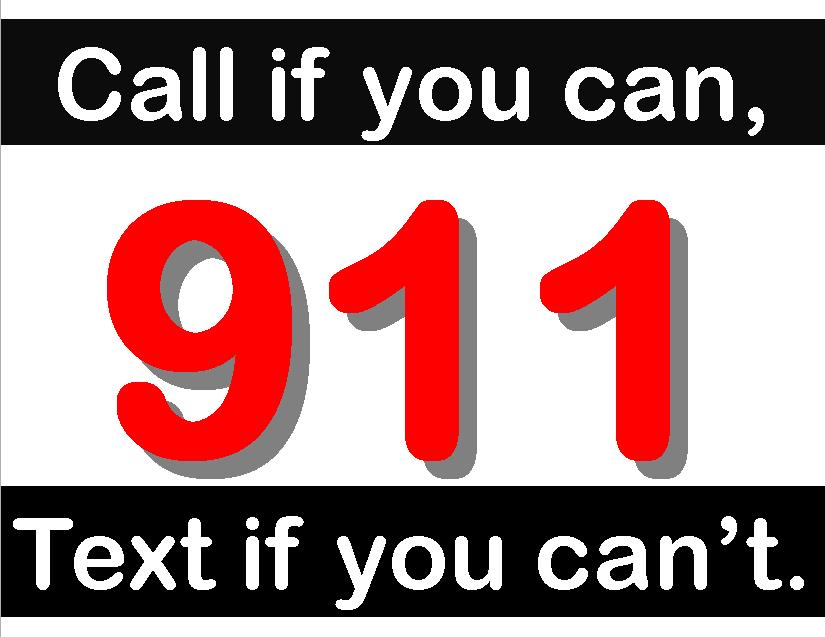Text 9-1-1
 Text-to-9-1-1 is a service for emergency situations when calling 9-1-1 is not possible.
Text-to-9-1-1 is a service for emergency situations when calling 9-1-1 is not possible.
AT&T, Sprint and Verizon customers have the service available to them now; T-Mobile and MetroPCS customers will have the services in the very near future.
Text-to-9-1-1 service provides an equal access to emergency services for residents with hearing and speech disabilities. However, our clear message is “Call if you can, Text if you can’t” Texting is not a replacement for calling 9-1-1; whenever possible, people should always call 9-1-1 instead of texting.
How to text 9-1-1 in an emergency:
- Enter the numbers “911” in the “To” field;
- The first text message to 9-1-1 should be brief and contain the location of the emergency – address and municipality, and type of help needed;
- Push the “Send” button.
- Be prepared to answer questions and follow instructions from the 9-1-1 call taker.
- Text in simple words – do not use abbreviations.
- Keep text messages brief and concise.
Below are a few things to know if you need to text 9-1-1:
- Text location information is not equal to current location technology. This means when calling 9-1-1, your cell phone connects to the closest cell tower and your handset (your cell phone) location is sent to 9-1-1. When using Text-to-9-1-1, your cell phone connects to the closest cell tower and the cell tower location is sent to 9-1-1. This means we will know what cell tower you are texting from but we won’t know where you are.
- As with all text messages, 9-1-1 messages can take longer to receive.
- A text or data plan is required to place a text-to-9-1-1
- If texting to 9-1-1 is not available in your area, or is temporarily unavailable, you will receive a message indicating that texting 9-1-1 is not available and to contact 9-1-1 by other means.
- Text-to-9-1-1 cannot include more than one person. Do not send your emergency text to anyone other than 9-1-1.
Do not text and drive!
